Solar eclipse of March 17, 1904
| Solar eclipse of March 17, 1904 | |
|---|---|
 Map | |
| Type of eclipse | |
| Nature | Annular |
| Gamma | 0.1299 |
| Magnitude | 0.9367 |
| Maximum eclipse | |
| Duration | 487 sec (8 m 7 s) |
| Coordinates | 5°36′N 94°42′E / 5.6°N 94.7°E |
| Max. width of band | 237 km (147 mi) |
| Times (UTC) | |
| Greatest eclipse | 5:40:44 |
| References | |
| Saros | 128 (52 of 73) |
| Catalog # (SE5000) | 9290 |
An annular solar eclipse occurred on March 17, 1904. A solar eclipse occurs when the Moon passes between Earth and the Sun, thereby totally or partly obscuring the image of the Sun for a viewer on Earth. An annular solar eclipse occurs when the Moon's apparent diameter is smaller than the Sun's, blocking most of the Sun's light and causing the Sun to look like an annulus (ring). An annular eclipse appears as a partial eclipse over a region of the Earth thousands of kilometres wide.
Related eclipses
Solar eclipses 1902-1907
Each member in a semester series of solar eclipses repeats approximately every 177 days and 4 hours (a semester) at alternating nodes of the Moon's orbit.
| Descending node | Ascending node | |||
|---|---|---|---|---|
| 108 | April 8, 1902 Partial |
118 | March 29, 1903 Annular | |
| 123 | September 21, 1903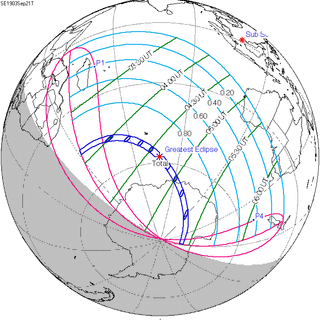 Total |
128 | March 17, 1904 Annular | |
| 133 | September 9, 1904 Total |
138 | March 6, 1905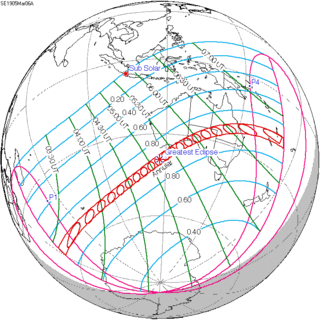 Annular | |
| 143 | August 30, 1905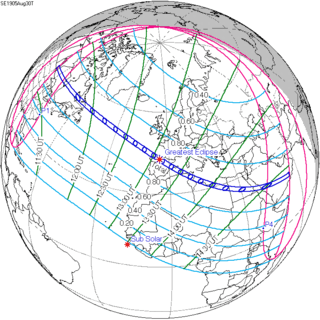 Total |
148 | February 23, 1906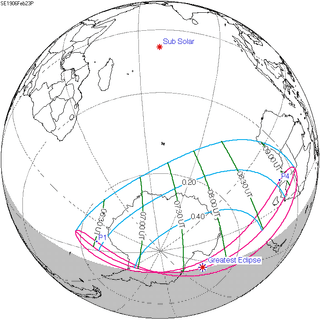 Partial | |
| 153 | August 20, 1906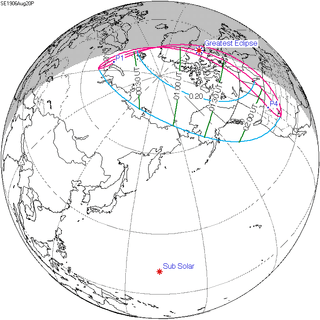 Partial | |||
Tritos series
This eclipse is a part of a tritos cycle, repeating at alternating nodes every 135 synodic months (≈ 3986.63 days, or 11 years minus 1 month). Their appearance and longitude are irregular due to a lack of synchronization with the anomalistic month (period of perigee), but groupings of 3 tritos cycles (≈ 33 years minus 3 months) come close (≈ 434.044 anomalistic months), so eclipses are similar in these groupings.
| Series members between 1901 and 2100 | |||
|---|---|---|---|
 March 17, 1904 (Saros 128) |
 February 14, 1915 (Saros 129) |
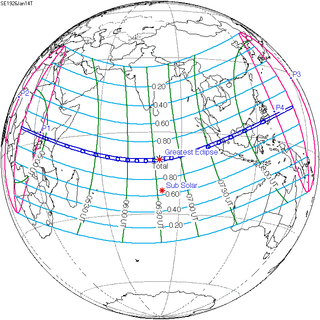 January 14, 1926 (Saros 130) | |
 December 13, 1936 (Saros 131) |
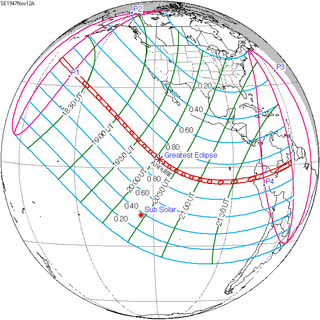 November 12, 1947 (Saros 132) |
 October 12, 1958 (Saros 133) | |
 September 11, 1969 (Saros 134) |
 August 10, 1980 (Saros 135) |
 July 11, 1991 (Saros 136) | |
 June 10, 2002 (Saros 137) |
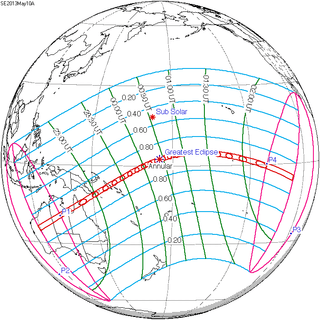 May 10, 2013 (Saros 138) |
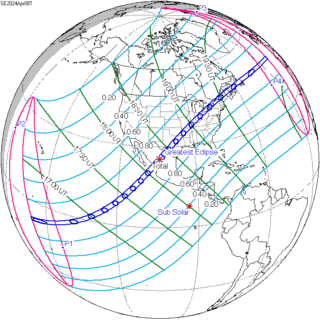 April 8, 2024 (Saros 139) | |
 March 9, 2035 (Saros 140) |
 February 5, 2046 (Saros 141) |
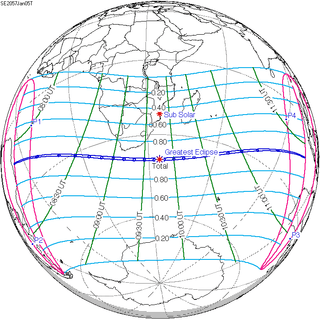 January 5, 2057 (Saros 142) | |
 December 6, 2067 (Saros 143) |
 November 4, 2078 (Saros 144) |
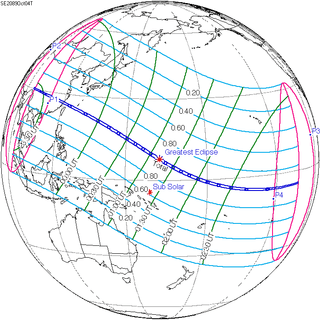 October 4, 2089 (Saros 145) | |
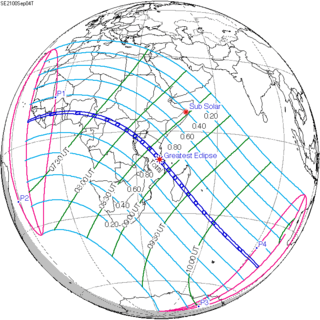 September 4, 2100 (Saros 146) |
|||
Notes
References
- Earth visibility chart and eclipse statistics Eclipse Predictions by Fred Espenak, NASA/GSFC
- Russia expedition for solar eclipse of March 17, 1904
| Wikimedia Commons has media related to Solar eclipse of 1904 March 17. |
